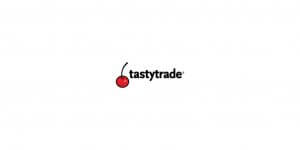If one good thing has happened this year, it is a return to volatility. How can FX brokers master it?
“Recent restrictions by regulators can be considered as gift to the industry – the clients will be able to enjoy high volatility while being protected by lower leverage, negative balance protection and transparency of trading in a regulated environment” – Denis Peganov, FXOpen

The year 2020 will most certainly be recognized in the annuls of history for generations as a year in which those appointed to government positions in order to represent us, the people, turned their responsibilities around in a very quick globally aligned action which now puts the public as their servants, rather than the governments as democratic representatives of public requirement.
Thus, now in many Western nations, especially those with substantial financial markets influence such as Britain, America and Australia, and some Asia Pacific region nations such as Singapore and Hong Kong, freedom and democracy are becoming a distant memory, and the government-enforced lockdowns decimating livelihoods.
Whilst this has waged untold damage on social and economic structures that have taken hundreds of years to build and placed unprecedented powers in the hands of national leaders, the single upside to the tyranny is that markets have become volatile, and as a result, electronic trading is alive and well.
Low volatility has been a bugbear for quite some years, even to the point at which almost ten years ago, FXCM founder Drew Niv said that there had been a period of almost zero volatility for 21 years – meaning that if that can be taken at face value, we have seen very stable markets with little volatility for almost 30 years, with the exception of one or two completely disruptive episodes such as the Swiss National Bank’s removing of the peg on the EURCHF pair five years ago.
At that time, so unprepared was the entire industry for any form of volatility, that this cost brokers and Tier 1 banks dearly as negative balances piled up and in some cases finished off brokers. The b-book once again was triumphant.
However, if the FX industry has become so accustomed to stable markets and not much volatility due to the political stability and democratic, free, business orientated structure of most ‘first world’ countries whose currencies make up the reserve currency pairs that are most traded, and in which the majority of trade execution takes place under well organized infrastructure, what happens when those regions become despotic and people are forced behind their sofa, losing their business, livelihoods, freedoms and decimating the economy?
Volatility, that’s what.
Given that the retail electronic trading sector has become so accustomed to low volatility to the point at which it views it as necessary in order to remain in business – counterparty credit is extremely hard to obtain from Tier 1 FX interbank dealers partly due to absolute risk aversion – and yet revenue margins are very low due to over 1200 near identical MetaTrader based entities on the market offering the same range of spot FX instruments, many of which are just white labels of MetaQuotes, an affiliate marketing firm rather than a platform company, and the resultant cost of attracting low-deposit, inexperienced, low lifetime value clients.
It is common knowledge within marketing departments of most retail FX brokers that it costs over $1200 to acquire a client via the somewhat obsolete method of lead buying and affiliate marketing, yet many first time deposits are as low as $200, with lifetime value at around six months.
So, given the new wave of volatility, it would perhaps present an opportunity should brokers look to structure their business around it and attract traders that are up for the challenge of trading volatile markets rather than novices stagnating in a b-book zero sum situation, as long as risk management and the right framework of execution methodologies could be utilized.
Today, FinanceFeeds spoke to Denis Peganov, Business Development Director at FXOpen in order to gain perspective on this.
“We see a lot of opportunities for both traders and brokers” said Mr Peganov.
“We do believe that one of the main goals of all brokers is to empower traders to be able to benefit from increased volatility and availability of financial markets.”
“Recent restrictions imposed by regulators on brokers (e.g. recent ASIC announcement on leverage cuts) can be considered as gift to the industry – the clients will be able to enjoy high volatility while being protected by lower leverage, negative balance protection and transparency of trading in a regulated environment” he continued.
“Brokers, on the other hand, need to invest in risk management tools and technology in order to be able to deliver best trading conditions as well as protect themselves. This would include meticulous choice of partners and LPs, bigger liquidity pool, technology, allowing them to match client trades against each other and potentially cooperating with each other on creating integrated ECNs” – Denis Peganov, Business Development Director, FXOpen
Earlier this year, research by Cass Business School Asset Management in London showed there to be a ’boutique premium’ in the European fund management industry of 0.56% and 0.23% net of fees, depending on which methodology is used.
The outperformance was particularly pronounced within the European small- and mid-cap and global emerging markets fund sectors, with a net-of-fees boutique premium of 1% and 0.5% respectively.
The hedges give purchasers protection against FX movements between the announcement of an M&A deal and its completion. Increased competition in this space has seen the price of the hedges slide from 25% of the cost of an equivalent option in 2015 down to as low as 15%.
The boutique premium was first coined by asset manager AMG Group in 2015 when it reviewed the performance of US boutiques versus US non-boutique asset managers, the company actively promoting itself since then as the ‘partner of choice to the world’s leading Alpha-Generaring boutique firms”.
Professor Andrew Clare, who undertook the research at Cass Business School Asset Management, which is thought to be the first research of its kind, said the results “provide enough evidence to warrant further analysis of this important part of the asset management industry”.
“Future research should focus on the factors behind the existence of the boutique premium, such as the ownership structure of boutique managers and/or their approach to portfolio construction,” Professor Clare said.
Tim Warrington, chairman of the Group of Boutique Asset Managers (GBAM), who Clare consulted with to identify boutique firms, said the results were unsurprising as boutiques were “smaller, highly motivated, specialist firms which seek to consistently outperform while aligning their interests with that of their clients”.
If this is not another trigger for the retail firms to elevate their product range toward the asset management and multi-asset sector and embrace higher volatility strategies with proper risk management, then who knows what is.









